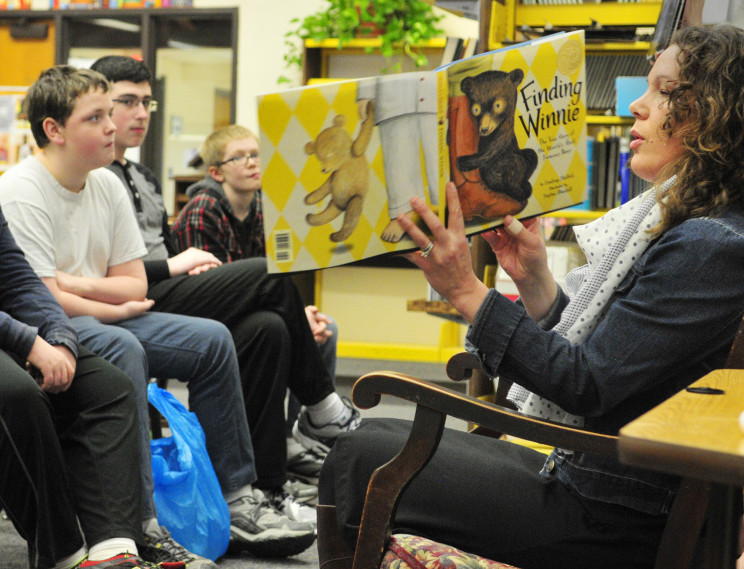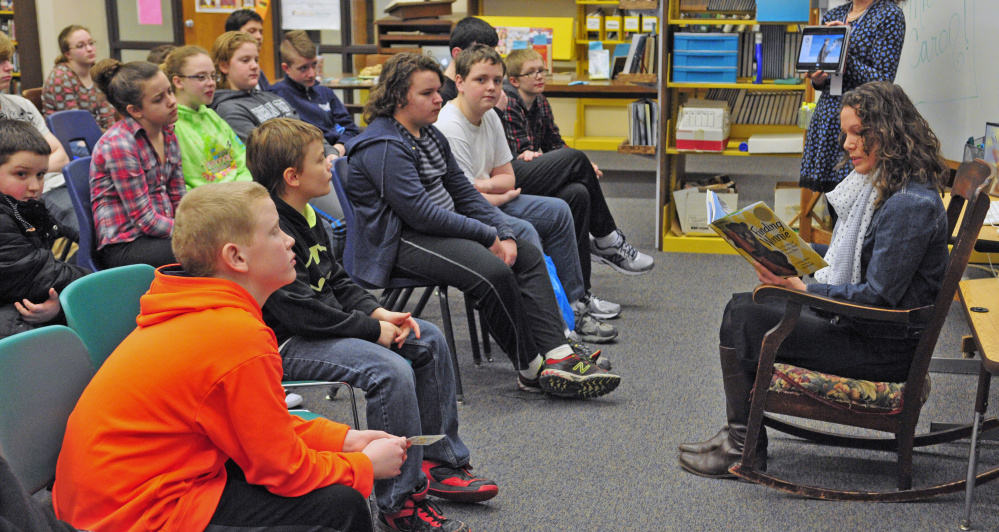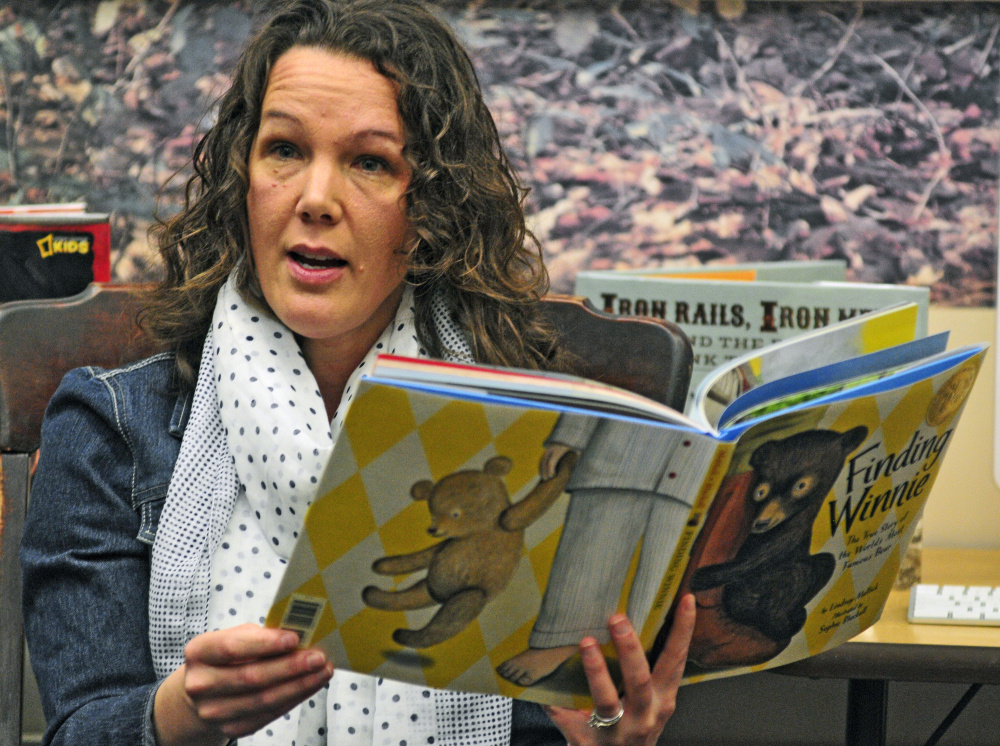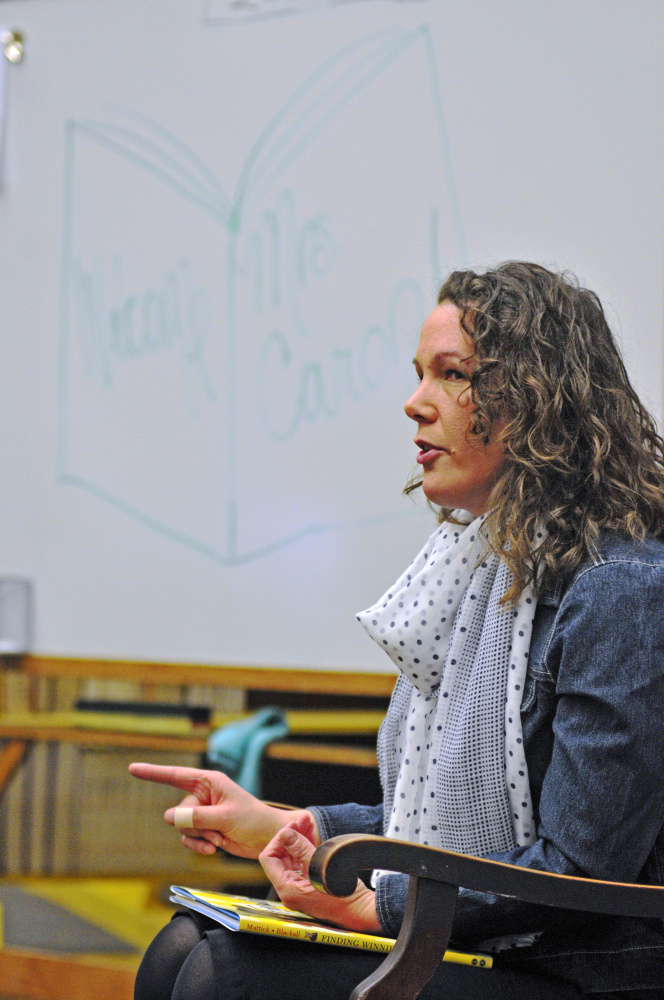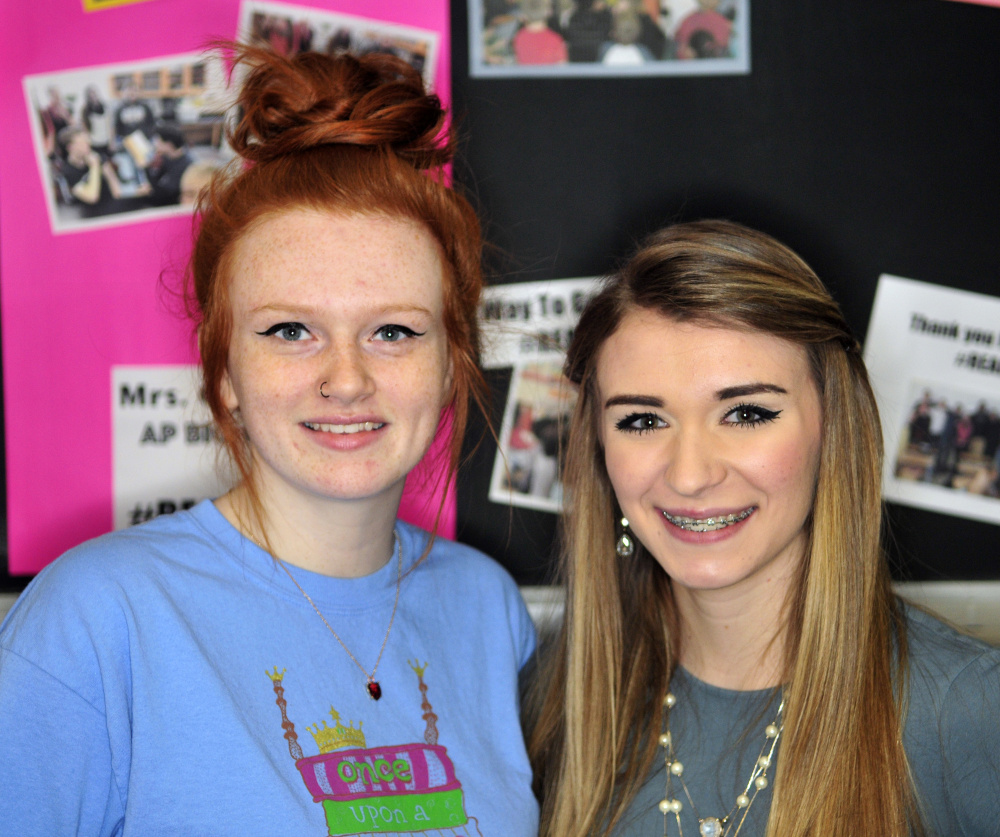GARDINER — High school junior Sierra Goodridge doesn’t have a sibling at home to read to, so she spends time before, during and after school reading to younger children in the community.
“I get super excited to interact with kids face-to-face, and having the opportunity was great,” Goodridge said. “I want them to know that reading is important.”
Goodridge, 17, and classmate Melanie Mansir, 16, read to kindergartners at Laura E. Richards School in Gardiner as part of the statewide “Read to ME Challenge,” a monthlong public awareness campaign to promote childhood literacy in Maine, which began Feb. 2 with a reading by first lady Ann LePage. Mansir said she knew it would mean a lot to the children to have someone reading to them.
Goodridge and Mansir participated in the program through their school’s National Honor Society. Advisor and learning center teacher Alan Yuodsnukis said it is fantastic to see such enthusiasm and excitement about books and reading.
“It’s really nice (that our students) share that enthusiasm with younger kids,” Yuodsnukis said. “It’s really great for the older students to send a message (to the young children) that reading is fun and cool. Hopefully it will stick with them.”
The state’s Department of Education had 75 challenge partners, according to literacy specialist Lee Anne Larsen, including Maine School Administrative District 11, which includes Gardiner, Pittston, Randolph and West Gardiner.
Teacher-librarian Debra Butterfield helped organize a number of activities throughout the month for Gardiner-area schools, including a reading to students Friday morning at Gardiner Community Middle School.
“We live in a world of distraction, and students have so many competing pulls for their time and attention,” she said. “The reason our district is participating in this challenge is so we can have the opportunity to be a springboard for our community to rally around reading and our students.”
Friday morning’s activity was a reading of a new book based on the true story about the origin of Winnie the Pooh. Stacy Caron, the community business development manager at Barnes & Noble in Augusta, read “Finding Winnie” to a group of more than 30 students in the school’s library, which received the book as a donation from Caron.
The students, most of whom were boys, were engaged and followed along with the story, written by Lindsay Mattick. After the reading, students asked questions about the story and about working at Barnes & Noble.
“I think kids like reading more than we give them credit for,” Caron said. “You might think kids in middle school think they are too cool and don’t want to be read to, but they still have that little kid inside of them, so they do want it.”
Eighth-grader Lucas Lutz, described by Butterfield as a power reader, said he enjoys reading books in part because of the texture of the pages and because it helps him relax.
“(I like to read) especially when stuff around the house is really stressful,” Lucas, 12, said. “I like to read because it takes me out of the stressful world.”
The perception might be that children these days spend most of their time looking at computer screens or playing on Facebook. But Goodridge said she doesn’t use social media, and seventh-grader Emily Brown said most of her friends and her parents still read.
“Books were here before we had all this technology,” Brown said. “It’s more fun having the actual book in your hand and flipping through the pages.”
Gardiner resident Terri Lynn Pulley assisted Caron Friday and spent the day Thursday reading to every class at Pittston Consolidated School. She wants students to know that the love of reading is ageless and that reading never grows old.
Another of the program’s partners, the Alfond Youth Center in Waterville, has encouraged family members and the staff to bring in their favorite books. Karla Stratton, the after-school programs operation manager, said the goal is that after someone reads a book, the person challenges someone else to read to children, like a reading version of the ALS Ice Bucket Challenge.
Tim Lecrone, CEO of the youth center, said in an email that the benefits of reading aloud are exceptional.
“When you realize that this is a program having adults volunteer their time to read to children, it only magnifies in significance,” Lecrone said. “These types of positive, mentoring connections are invaluable for both childhood and community growth, and we are happy to be a part of it.”
Larsen, of the state education department, said in an email the benefits of reading with children are numerous, no matter the medium. It stimulates brain development, increases their attention spans and listening skills, builds vocabulary and helps children gain knowledge of the world.
“The interactions children have with family members, caregivers and other trusted adults as they engage with books builds oral language as a result of the conversations, reading comprehension through questioning and discussion and strong emotional bonds through positive interactions,” she said.
But those bonds and positive interactions aren’t limited to adults. Goodridge said she has a young student she sees in the grocery store.
“Every time she sees me, she tells me how I taught her a word,” Goodridge said. “It’s definitely special knowing I helped them in some way.”
The challenge asked people to read to one or more children for a least 15 minutes. It ends on March 2, the National Education Association’s “National Read Across America Day,” which is also the birthday of celebrated children’s author Theodor Geisel — better known as Dr. Seuss.
Jason Pafundi — 621-5663
Twitter: @jasonpafundiKJ
Send questions/comments to the editors.


